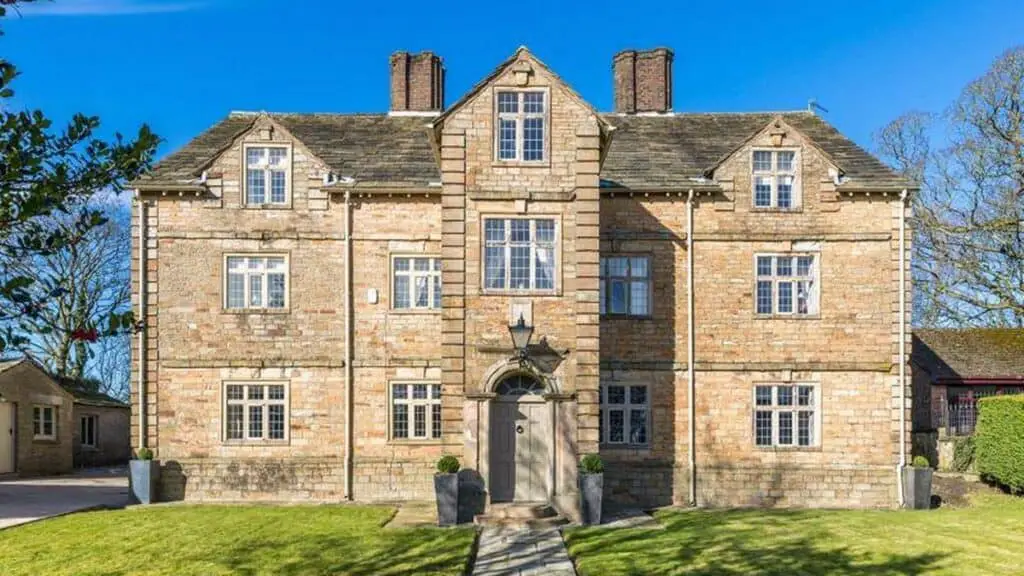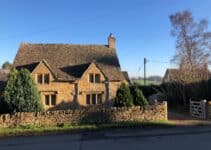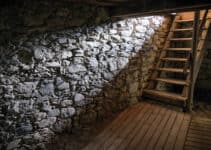In feudal England, a cottager held a modest dwelling with a large garden to support a family in exchange for duty to the landholding lord. With time, however, “cottage” came to mean any modest dwelling.
When most people think of a “cottage,” they envision a small, cozy residence in the countryside. On the other hand, a manor is an opulent setting with almost castle-like provisions on a smaller scale.
The royals utilized the house to remain with their family and troop before moving on to the next location and delegating maintenance to their staff.
But let’s dive into some of the the differences between cottage vs manor.

What Is The Difference Between A Cottage And A Manor
Today generally refers to tiny, traditionally constructed housing in British English. However, it can also be used to describe newly built homes that are meant to seem like older ones.
Cottages can be freestanding homes or rowhouses, like those found in mining towns.
Cottages were widely used as farm laborers’ essential housing. Today, the term “holiday cottage” refers to a specific type of residential rental property in England that provides its owner with beneficial tax treatment.
Sometimes called a chalet.

A royal authorization was required to crenelate a manor house, even though manor houses were not typically built with strong defenses like castles. Walls or ditches frequently surrounded these settlements, featuring farm outbuildings.
In the pre-police era, these fortifications were built with moats and drawbridges to protect against gangs of roving robbers and thieves.
They also had gatehouses and watchtowers but lacked the keep, massive towers, and high curtain walls typical of castles. The great hall was the centerpiece of the manor home, with ancillary rooms constructed as the decline in feudal warfare made it possible.
Cottages are typically considered pre-modern structures, despite their widespread use in contemporary popular culture in a more generic and romantic sense.
Older, pre-Victorian cottages typically feature low ceilings and exposed timber from the building’s frame, which can be an eyesore and even physically disrupt daily life.
During renovations, it is common to practice revealing once again the original timber purlins, rafters, supports, etc., of such buildings to give the impression of greater age and authenticity.
A lord and his big family might not be able to survive on the harvest from a single manor for an entire year, so he would likely only stay a few months there before moving on to the next estate where supplies had been stashed.
As a bonus, the now-empty manor house could be thoroughly cleaned and repaired without disturbing the previous residents.
As a result, these non-resident lords had to name a steward or seneschal to serve as their representative in these affairs and to preside over the manorial courts of his many manorial domains. Each manor had a resident official, termed a bailiff or reeve in England, responsible for day-to-day administration.
Traditional cottages are small, usually semi-detached or terraced, and have only four rooms, i.e., two up and two down, while modern additions and renovations have made them much larger.
One sort of cottage is called a “penty,” It is typically a small, one-room dwelling adjacent to a bigger property and used by workers or fishermen. Large, functional, and unpretentious homes have also been referred to by the name “cottage.”
Almost every great manor house in the Middle Ages had its deer park in the vicinity, enclosed with royal permission so that venison might be stored there.
Royalty and their massive traveling entourage, which needed to be fed and entertained, were prohibited from hunting deer within these designated parks, as were nearby landowners and anybody else.
During the 1600s, many lords of manors moved out of their old manor houses, often near or in the village and next to the parish church. Instead, they built a new manor house inside the walls of their old deer parks. The situation became more private and relaxed.
What Makes A House A Manor?
The main residence on an estate is a manor house. Typically, they were between 750 and 1,500 acres in size. A large manor might have several villages connected, whereas a small manor might be so small that only a portion of a village’s residents was employed there.
The manor house’s original structure was a loose conglomeration of wooden or stone structures comprising a chapel, a kitchen, farm buildings, and a hall. The village’s business meetings were held in the hall, which also served as the location for the manorial court.
Before the advent of more modern mansions, the lord of the manor usually lived in a manor house.
In the European feudal system, the house served as the administrative hub of the manor; in its grand hall, the lord’s manorial courts, community meals with the manor’s tenants, and large feasts were held.



